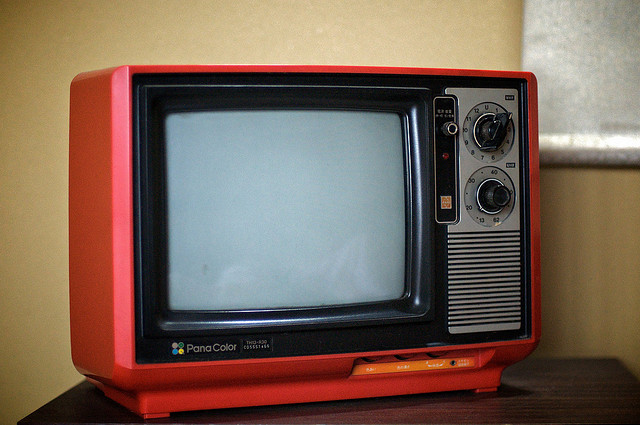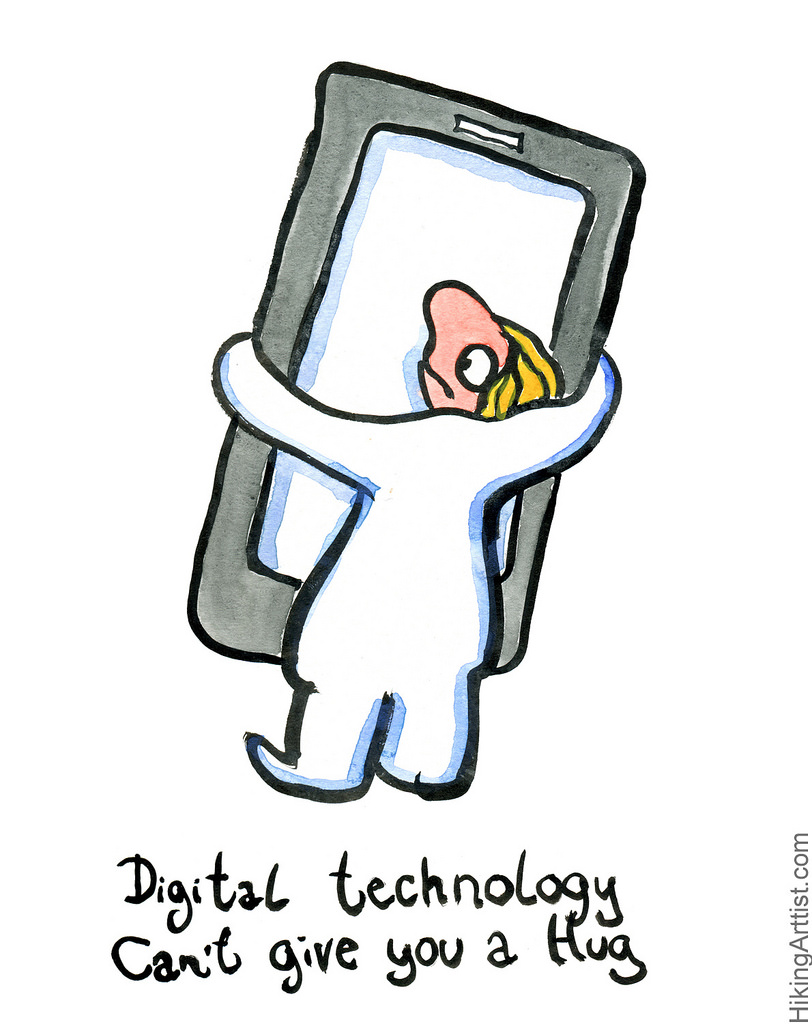Three of the most common investments, according to STAT, are Johnson & Johnson, Pfizer and Merck. And, members of Congress are allowed to hold them even when they sit on the committees that regulate these companies, the House Judiciary Committtee, which oversees patent law, and the House Energy and Commerce Committee, which oversees the FDA and drug regulation.
Category: Drugs and technology
-

Members of Congress have a stake in drug and device companies they regulate
We all know about the large amount of money the drug and device companies contribute to members of Congress, with the hope that it will lead them to support legislation that maximizes their profits. (And, indeed, federal policy supports high drug prices.) But did you know that many members of Congress invest substantially in these companies? According to a STAT investigation, some 30 percent of Senators and 20 percent of House members have a stake in drug and device companies they regulate.U.S. Representative Christopher Collins has a $5-25 million stake in a company he co-founded that makes the parts for a machine that performs diagnostic tests. So, not surprisingly, when the FDA said it wanted to regulate those tests, he objected strongly. He also appears to object both to FDA monitoring of drugs for safety and efficacy after they go to market, calling for a loosening of this oversight activity, and to the medical device tax in the Affordable Care Act.U.S. Representative Scott Peters objects to the Innovation Act bill, which would benefit consumers by permitting more challenges to pharmaceutical company patents. It would also impose a significant cost on the drug companies. His wife is a big investor in pharmaceutical companies. The list of members with conflicts between their personal desires and their responsibilities to the public goes on and on.With their wealth in part contingent on high returns on investment for the drug and device companies, it’s no wonder Congress has yet to pass a law that would permit Americans to import drugs from abroad, let alone to allow the negotiation of drug prices.Here are six tips for keeping your drug costs down if you have Medicare. -

Should drug companies be allowed to advertise on TV?
On November 17, 2015, the American Medical Association voted to support a ban on drug and medical device company advertising on TV. The AMA sees a negative impact from these ads and also says these ads lead to an increase in drug and device prices. Moreover, they say these ads lead individuals to ask for drugs which they don’t need, are more expensive than other treatment options, and can be harmful to them.
In the last two years, there has been a 30 percent increase in the amount that drugs and device companies are spending on direct-to-consumer advertising, now at $4.5 billion annually. The AMA is particularly concerned with the cost of drugs, which rose almost five percent last year. They are often unaffordable to patients, even those with insurance, keeping them from getting needed care.
Drug and device companies could only conduct extremely limited direct-to-consumer advertising until 1997 when the FDA loosened restrictions. For almost 20 years they have been advertising heavily to consumers, Yet, most people do not have the scientific or technical knowledge to understand whether a particular drug or device is right for them based on an ad.
That notwithstanding, the ads do lead nearly three in ten people to talk to their doctor about a drug. And, two out of three of these people ask their doctors for the prescription.
A recent Kaiser Family Foundation poll shows that about half the population thinks the drug company advertising is generally good. But, almost 90 percent of the public, Democrats, Republicans and Independents alike, supports FDA review of the ads for accuracy and clarity before they are aired.
Given that prescription drug advertising drives up drug costs, the risk of harmful side effects from many drugs, along with FDA drug and device approvals that are sometimes not based on clinical evidence of safety and efficacy, do you think drug and device companies should be allowed to market directly to consumers? Please post your comment.
-

Side effects of drugs prescribed off-label often serious
The Supreme Court is about to consider whether drug companies should be allowed to promote their drugs for off-label use as a matter of free speech. A new study in JAMA of drugs prescribed off-label suggests that it would be a grave mistake. The researchers find serious risks from off-label use of drugs in many instances.
The research suggests that doctors who prescribe drugs off-label do so with greater care and monitor the effects on their patients. The researchers found that only 20 percent of the time that off-label drugs were prescribed was there strong evidence to support the prescription.
Data reveals that doctors often do not understand the indications for which the FDA has approved a drug’s use. So, patients should ask their doctors about these indications before opting to take a drug prescribed for off-label use. At the very least there should be strong evidence of the drug’s efficacy for its prescribed use.
To undertake the study, the researchers looked at electronic data for more than 45,000 Canadian patients over five years, including drugs prescribed, the reason the drug was taken and treatment outcomes—all of which is not available for patients in the United States.
Of the patients studied, 7.6 percent had bad side effects. Side effects were far greater–44 percent higher–for patients taking drugs off-label than for patients taking drugs for their approved use. The researchers did not find a difference in side effects between drugs used off-label and on-label when there was strong scientific evidence to support the off-label use.
What’s clear from the study is that we need to know a lot more about prescription drug use in the United States, both on-label off-label. We currently do not capture the reasons for which drugs are being prescribed and the outcomes for patients using the drugs. Today, it is conservatively estimated that 11.8 percent of drugs prescribed are for off-label use.
The FDA approves drugs only for particular use at a particular dosage, often based on clinical tests, checking for safety and efficacy. Sometimes, these approvals are based on laboratory evidence, where the data is less compelling and the safety and efficacy of the drugs less clear. Either way, the FDA dedicates few resources to monitoring drugs post approval. Although drug companies generally are not allowed to market them for off-label use, doctors may prescribe drugs for any reason they choose.
-

Federal policy promotes high drug prices
The guy who in the early 1980s helped design the current regulatory structure that governs the pharmaceutical industry has some incisive thoughts about how things have played out and the current outrage about drug prices. In a blog for the journal Health Affairs, Alfred Engelberg argues that the 1984 law (called the Hatch-Waxman Act) that allowed drug companies to sell their products without generic competition for over a decade has “not withstood the test of time.”
He says that law and subsequent legislation have created a monopoly situation for the companies that make brand name drugs, permitting them to price gouge the American public.
The big worry today surrounds so-called biologic drugs—those made from living materials and through biotech engineering. Most are very expensive–$10,000 to $200,000 or even more for a year’s treatment. Many new cancer drugs are biologics, with more to come over the next decade. Here, too, Engelberg argues, Congress went too far in 2010 when it permitted such drugs 12 years of market exclusivity (meaning no generic competitors allowed.)
“High prices… are the inevitable result and will remain so unless Congress makes fundamental changes in existing law,” he writes.
Engelberg also asserts that today’s laws and regulations discourage competition based on price or the comparative effectiveness of medicines. For example, Congress has barred Medicare from negotiating directly with drugs companies to get the best price based on price and effectiveness. Say drugs A, B and C treat a certain form of cancer but drug B has been proven to be 20% more effective and is also 15% less expensive. Medicare is not allowed to go to the makers of drugs A and C and say we won’t pay your higher price. (Drug price negotiation is a top policy issue for Americans.)
To boot, current law allows drug companies to manipulate this dysfunctional marketplace by spending tens of billions of dollars every year to stoke demand for high-priced, low-value drugs (for example, through drug advertising that is allowed in only one other developed country (New Zealand), and by paying doctors to give educational seminars on brand-name drugs. Medicare wasted over $4 billion in 2013, for example, on the heartburn drug Nexium and the cholesterol drug Crestor. For both drugs, equivalent alternatives are available at a tiny fraction of their cost, Engelberg says.
Finally, Engelberg inveighs against the “false notion” that high drug prices and monopolies are necessary to support the high cost of research. In fact, he says, studies show that what high drug prices over the past 25 years have primarily yielded is “one of the most profitable industries in America,” which enjoys a median return on assets two to three times higher than the median return for all Fortune 500 companies.
To read Engelberg’s prescription for reform, access his article here. And, if you have Medicare, here are six tips for bringing your drug costs down and six things to know about your over-the-counter medications. Keeping a list of your medications and the medications of your loved ones on your phone or in your wallet helps ensure that, in case of emergency, you and the people you love get appropriate care. Here are four other important tips.
-

One way to bring down the cost of drugs: Reference pricing
Prescription drug prices remain a top policy issue for the majority of Americans. Many life-saving drugs are too expensive. And, that’s largely because Congress has given drug companies a range of rights and protections that allow them to set prices on many drugs people need. It’s time Congress stepped in to bring down the cost of drugs and allowed government drug-price negotiation.
In the meantime, economist Austin Frakt, proposes we borrow a page from other countries and insurers adopt reference pricing as a way to bring down the cost of many drugs. It sounds easier than it is for some drugs, but it might be a smart first step for other drugs. It appears to be working for hospital prices, and it could also work for medical devices and different therapies.
With reference pricing, drugs with the same or similar treatment effects are grouped together into a class. A class of drugs would all contain the same active agent. The health insurer then would pay one price for all the drugs in a class, the reference price. If an individual wants a different drug in the class, the insurer would cover the amount up to the reference price and the individual would pay the difference.
The idea at its best is that drug companies will lower the price of drugs in a class closer to the reference price to increase their market share. Insurers could choose among a number of ways to decide on the reference price. Some countries choose a reference price that is the lowest price of a drug in a class. Other countries choose the average price.
Drug companies arguably would continue to innovate because they are rewarded for developing drugs in new therapeutic classes. Or, they would develop a lower-cost drug in an established therapeutic class to drive profits.
To be clear, with reference pricing of drugs, it matters a lot how drugs are grouped. For example, statins could all be grouped together or they could be grouped along with other cholesterol drugs that might be far more costly, but also might be more effective. If all cholesterol drugs were grouped together for purposes of reference pricing, it could make the cost of the more effective drugs out of reach for many people who need them.
Also, with reference pricing, diagnosis might be deemed irrelevant. However, a drug that is cost-effective at treating one type of cancer might be a waste of money to treat another type of cancer. So, there’s a compelling case that cost-effectiveness based on diagnosis should be factored into the pricing.
That said, all too often people need a high-cost drug because the low-cost drug in the same therapeutic class that works for most people does not work for them. With reference pricing, these individuals could be burdened with serious expenses.
Without a doubt the better solution is for the U.S. to follow the lead of other wealthy nations and have the federal government negotiate one price with drug companies for any given drug. If that’s too complicated, or to minimize issues raised in the negotiation process, we could look at the prices other wealthy countries pay for these drugs and set our prices at their average, highest, or lowest price. Even if we chose to pay the highest prices for these drugs outside the U.S., we would be saving billions of dollars.
-

Majority of cancer drugs that FDA has recently approved don’t work
According to a new study in JAMA, there is no evidence that the majority of the U.S. Food and Drug Administration (FDA) approved cancer drugs over the last five years work. The FDA used substitute measures, laboratory measures rather than clinical evidence, to approve two out of three cancer drugs, without any indication that the drugs either improve health or prolong life. Indeed, in follow-up studies, 86 percent of drugs approved through substitute measures showed no clinical benefits.
In the case of bevacizumab, a breast cancer drug treatment, the FDA allowed the drug to go to market based on substitute measures that showed “progression-free survival” or PFS. But, a later study showed substantial toxicity and no improvement in life expectancy. And, the FDA ended up removing authorization to market it.
In 2009, the U.S. Government Accountability Office took the FDA to task for failing to do postmarketing studies on all drugs that are approved using substitute measures. The GAO reported that the FDA had plans to improve oversight, but it was not prepared to say whether those initiatives would be effective. According to the GAO, there are no specific conditions that require the FDA to speed up the withdrawal of a drug from the market if a drug company does not conduct a follow-up study in a timely manner or if a drug is shown not to be beneficial in a follow-up study.
The drug companies prefer getting drug approvals using substitute measures that do not focus on efficacy or health outcomes. Substitute measures allow drug companies to bring drugs to market faster and at less cost. When the drug companies use clinical measures that look at health outcomes, they must spend more time and money on their trials.
The problem is that substitute measures may show good performance when in fact health outcomes are not any better. Health complications may also not be evident through the substitute measures. So, drugs approved using substitute measures may actually hurt patients.
The price of a new cancer drug can easily be $10,000 a month, regardless of either the drug’s worth or its cost of development. The cost of cancer drugs can literally bankrupt a person with cancer. In 2014, the least expensive new cancer drug approved cost more than $120,000 a year.
Today, the drug industry helps cover the cost of the FDA’s work. And, we are left to wonder whether the FDA’s independence has been compromised at the expense of patient safety. At the same time, the public may wrongly assume that FDA approval means the drugs are safe.
Here’s a short post on how Congress leaves insured Americans at the mercy of the drug industry. Top 20-selling drugs in the U.S. are now three times more than the in the U.K. And, here are six tips for keeping your drug costs down, along with five programs that could lower your costs if you have Medicare. And, for other free and low-cost assistance programs, click here.
-

Top drugs in U.S. now three times more expensive than in U.K.
You’re not imagining it. Drug prices in the United States continue to escalate at lightning speed. A new Reuters-commissioned analysis reveals that we are now paying three times more than people in the United Kingdom–that’s right, 3 times more–for the top 20-selling drugs in the world. Americans subsidize the cost of drugs for people around the world, paying 6 times more than Brazilians and 16 times more than people in India for the same drugs.
Unlike in every other country, drug companies control the price of drugs in the United States. Not surprisingly, drug companies have jacked up prices astronomically between 2008 and 2014, with prices increasing 127 percent. Shkreli is one of many drug company CEOs giving drugs extraordinary price hikes. Hedgeclippers reports on the 25 drugs with the largest price hikes in the last two years. Since the drug companies control the prices of these drugs, there is no apparent limit to how high they will go. Here are six of the 25:
- After Shkreli became the CEO of Turing pharmaceuticals, he raised the price of one of its drugs, Daraprim, 5,000 percent, from $13.50 to $750 a pill. To enable the increase, he created a barrier to keep generic drug firms from producing a generic equivalent of Daraprim. Of note, Daraprim sells in the United Kingdom for 66 cents.
- Valeant produces 12 of the 25 drugs that have increased most in price in the last two years, an average of 378 percent, and 27 of the 50 drugs that have had the largest price increases. These price increases came at the time it partnered with Pershing Square Capital to buy Allergan.
- Horizon Pharma bought Vimovo a brand-name arthritis drug from AstraZeneca. Because there is no generic alternative, Horizon Pharma was then able to raise Vimovo’s price sky high, in this case 1200 percent in under two years.
- Egalet Corporation increased the price of Sprix 500 percent after buying it from Luitpold Pharmaceuticals. Its investor materials reported that Sprix’ wholesale price went “from $185 to $942 for one box of five bottles.”
- After selling a majority share of Alvogen to Pamplona Capital Management, Macrodantin, Alvogen’s treatment for urinary tract infections, climbed 48 percent.
- The price of Dutoprol, a blood pressure drug, rose 1000 percent after a company owned by the private-equity firm, Cerberus, bought it from AstraZeneca.
-

Three big problems with “21st Century Cures” bill
U.S. Representatives Fred Upton and Diana Degette have a plan for getting drugs to market more quickly, embodied in the “21st Century Cures” bill. Among other concerns it raises, it allows drug and medical device companies to go to market with new products evaluated using lower standards of safety and efficacy than required today. The bill’s expressed goal of fostering medical innovation may sound good, but it in fact puts all patients at serious risk while helping the health care industry see greater profits.
First, the bill does an end-run around the US Food and Drug Administration, essentially compromising its role to ensure drugs and devices are reasonably safe and effective. As it is, the FDA has several mechanisms for speeding up the development and approval proces[s for new drugs and devices. But, the bill allows drugs to go to market with less evidence about safety and even without evidence on effective clinical outcomes.
Second, the bill only opens the door further to price gouging by drug companies (read here about pay for delay and here about exorbitant prices for cancer drugs and here about the latitude drug companies have to control prices) and higher hospital costs. It rewards pharmaceutical companies unduly for developing new antibiotics, allowing them effectively to set prices. And, it encourages hospitals to use these new antibiotics, through higher payments, without regard to either their costs or the risk of increased antibiotic resistance through their overuse or unnecessary use.
Third, the bill provides a handout to the medical device industry, weakening the approval process for devices such as prosthetic hips and knees. In fact, that process needs strengthening.
In short, nothing in the bill encourages the drug and device companies to address unmet patient needs. Rather it implicitly condones escalating prices for less safe and less effective products. But, the medical industrial complex is a big supporter of members of Congress and a tremendous supporter of Congressman Upton. The bill passed the House of Representatives in July. It goes to the Senate some time this fall.
To read more about why the Senate should not pass 21st Century Cures from Breast Cancer Action, click here.
-

Smart pills win FDA approval to promote medication compliance
It is projected that only about half of people today take the medications that they are prescribed. Some people simply can’t afford to comply. But others get confused. The FDA has just approved new technology designed to promote medication compliance. The technology can track which pills you’re taking and whether you’re taking them at the right time.
It is not yet clear when this new medication compliance device will go to market. When it does, however, it can let your doctors and health care buddies know whether you are taking the right drugs at the right time.
Here’s how it works. Very small sensors that you can swallow will attach to your pills., a patch you wear with blue tooth technology will then track each pill you take on your smartphone app. You can then share that information with whomever you desire.
-

Don’t assume you can diagnose what’s wrong with you through the Web
With all kinds of seemingly trustworthy web sites and apps easy to access, more than one third of Americans turn to the Internet to figure out what’s wrong with them in both urgent and non-urgent situations. A new report shows that it can be a big mistake to diagnose your own condition through one of these symptom checker sites. Even symptom checkers developed by the Mayo Clinic’s and the American Academy of Pediatrics’ symptom don’t always get it right.
Testing 45 standardized patient health scenarios describing both common and more rare symptoms on 23 digital symptom checker sites, the study found that overall the digital sites only arrived at the correct diagnosis one third of the time (34 percent). For urgent care situations specifically, the sites provided the correct diagnosis first less than a quarter of the time, (24 percent). In 58 percent of the cases the site listed the correct diagnosis among the top 20 and gave appropriate triage advice 57 percent of the time.
Eight out of ten times, these sites did provide appropriate triage advice for people in emergency situations. In non-urgent cases, the sites only gave appropriate advice an average of 58 percent of the time; the sites encouraged doctors visits where self-care was appropriate.
Not surprisingly, different sites did a better job of listing the correct diagnosis first, but none of the sites did better than listing the correct diagnosis first half of the time.
If they were more accurate, these symptom checkers could both help ensure patients needing emergency treatment really got it and patients avoided the time and expense of visiting the doctor when it was unnecessary for them to do so. To read the full report, click here.